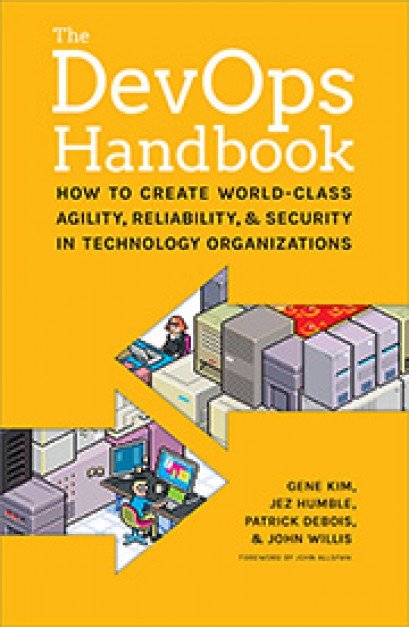9 March 2023

The DevOps movement's founders established it with the vision of demolishing silos and promoting superior collaboration among teams. However, in practice, DevOps has often unintentionally erected new barriers. Zero Trust is the solution to this issue. Originally a network security concept, Zero Trust has been gaining traction in DevOps to foster a culture of trust and security while enabling collaboration.
Zero Trust was first introduced in 2010 by John Kindervag, a former analyst at Forrester Research. It emerged as a response to the changing threat landscape, where traditional security models were becoming increasingly inadequate in protecting against modern threats. The conventional security model relied on a perimeter-based approach, which primarily enforced security at the network boundary, and once an attacker was inside, the system trusted them. Zero Trust demands that organisations verify access requests before granting them, assuming they cannot trust any user or device by default. To comply with the principle of least privilege, organisations should provide access to resources at the minimum level required to perform a task.
The principle of least privilege is the basis of Zero Trust, where organisations only grant users and devices access to the resources needed to perform their tasks. Zero Trust operates under the assumption that organisations cannot trust any device or user by default, and they should verify all access requests before granting them. It assumes that every request is potentially malicious until proven otherwise. Zero Trust enforces this principle by implementing various security controls, such as multi-factor authentication, encryption, and micro-segmentation.
Google is a prominent example of a company implementing Zero Trust in its DevOps environment. In its case study titled BeyondCorp: A New Approach to Enterprise Security, Google describes how it uses the BeyondCorp security model. Based on the Zero Trust principle, it eliminates the idea of a trusted internal network and treats all users and devices as untrusted. BeyondCorp encrypts all network traffic and configures every device securely. Every user and device must be authenticated and authorised before accessing any resources. Google has also implemented various security controls, such as multi-factor authentication and encryption, to ensure that users and devices meet the required security standards.
To achieve a Zero Trust model, organisations need to implement five key pillars:
1. Identity Verification: Requires verifying the identity of every user and device attempting to access resources, whether inside or outside the network perimeter. Establishing identity involves using multi-factor authentication, device profiling, and contextual information.
2. Device Security: Ensuring that every device connecting to the network meets security standards, such as being free of malware and having up-to-date security patches.
3. Network Segmentation: Requires segmenting the network into smaller zones to limit the spread of attacks. Creating micro-perimeters around sensitive resources involves firewalls, proxies, and other network security devices.
4. Application Security: Requires securing applications by implementing least privilege access controls, encrypting data in transit and at rest, and using secure coding practices.
5. Monitoring and Analytics: Requires continuous monitoring of the network for anomalous behaviour and using analytics to detect and respond to potential threats in real-time.
The principles of Zero Trust align well with the DevOps philosophy of collaboration and continuous integration and delivery. However, implementing Zero Trust in a DevOps environment can be challenging. DevOps teams must be able to move quickly and deploy changes rapidly, which can be difficult when security controls are in place. One approach to implementing Zero Trust in DevOps is incorporating security into the development process from the outset. Building security checks and controls into the pipeline involves incorporating vulnerability scanning, code analysis, and automated testing. Integrating security into the development process becomes a shared responsibility, and teams can work together to ensure security is not an afterthought.
Another approach to implementing Zero Trust in DevOps is to use infrastructure as code (IAC). IAC involves defining infrastructure as code and automating the provisioning and configuration of resources. By doing so, organisations enable a consistent and repeatable process for deploying resources that can be audited and version controlled. By using IAC, DevOps teams can incorporate security into the infrastructure from the outset and ensure that all resources meet the required security standards.
However, the implementation requires more than just technological solutions. It also requires a cultural shift towards a more security-conscious mindset. Ensuring that security is part of the organisational culture and that everyone understands the importance of security is necessary. It also fosters a culture of trust, where teams are encouraged to work together towards a common goal.
To achieve this, organisations can implement a range of practices, such as:
1. Foster Psychological Safety: Psychological safety is critical to fostering a culture of trust. It is essential to create an environment where team members feel comfortable expressing their opinions, ideas, and concerns without fear of negative consequences.
2. Encourage Collaboration: Collaboration is a crucial DevOps principle for implementing Zero Trust. Encouraging team collaboration can help break down silos and enable better communication and understanding of security requirements.
3. Provide Education and Training: Education and training are essential for ensuring that everyone understands the importance of security and how to implement it. Regular training sessions and resources can keep everyone updated with the latest security practices.
4. Implement Security Champions: Implementing security champions within the DevOps teams can help ensure security is not an afterthought. Security champions can ensure that the development process incorporates security from the outset.
5. Implement Continuous Security: Continuous security involves continuously monitoring the environment for potential threats and vulnerabilities and responding to them in real time. Organisations can ensure that security is always a priority and respond quickly by continuously monitoring the environment for potential threats and vulnerabilities and responding to them in real-time.
The Zero Trust security model assumes that organisations cannot trust any device or user by default and must verify all access requests before granting them. It is based on the principle of least privilege and requires implementing various security controls, such as multi- factor authentication, encryption, and micro-segmentation.
Implementing Zero Trust in a DevOps environment can be challenging but requires a cultural shift towards a more security-conscious mindset. Ensuring that security is part of the organisational culture, fostering a culture of trust, and implementing various practices, such as psychological safety, collaboration, education and training, security champions, and continuous security, are crucial to building a Zero Trust environment.
In conclusion, Zero Trust is transforming the DevOps culture by enabling a more collaborative and secure environment. Organisations can improve security posture by implementing Zero Trust, allowing rapid deployment and team collaboration.
By building security into the DevOps process from the outset, organisations can ensure that security is not an afterthought and that teams work together towards a common goal. To achieve a Zero Trust environment, organisations must implement a range of practices to foster a culture of trust and require a cultural shift towards a more security-conscious mindset.
As DevOps continues to evolve, the principles of Zero Trust will become increasingly important. With the increasing threat landscape and the need for more secure environments, organisations must recognise security. Organisations can improve security posture by implementing Zero Trust and enabling better collaboration. Enabling a Zero Trust environment will ensure that DevOps continues to drive innovation and change in the technology industry.
● The Zero Trust security model assumes organisations cannot trust devices or users by default.
● Implementing Zero Trust in DevOps requires a cultural shift towards a more security- conscious mindset and the implementation of a range of practices to foster a culture of trust.
● Building security into the DevOps process from the outset is essential for ensuring security is not an afterthought.
● Zero Trust is transforming the DevOps culture by enabling a more collaborative and secure environment.
● As DevOps continues to evolve, the principles of Zero Trust will become increasingly important for improving security posture and enabling better collaboration between teams.

